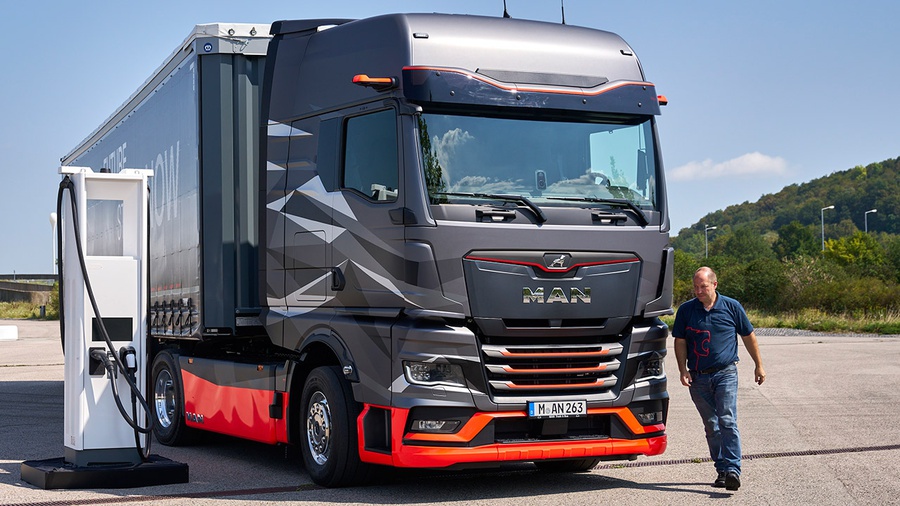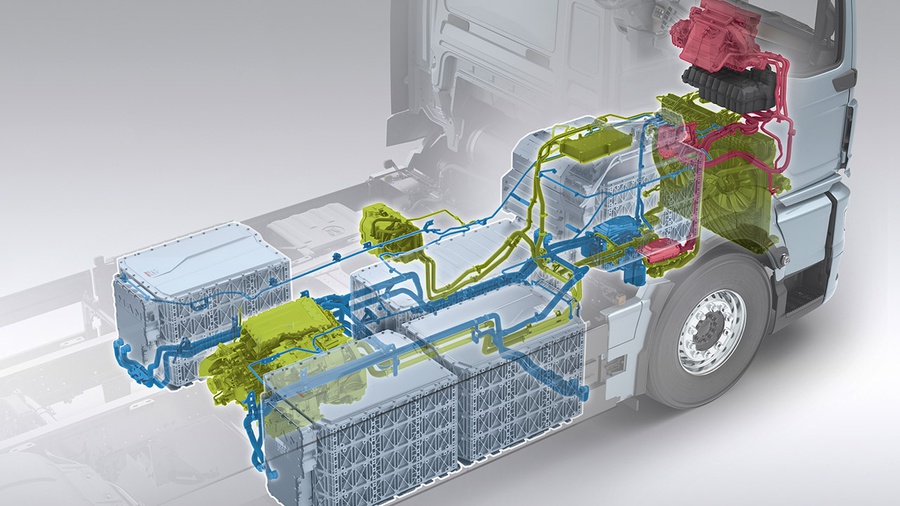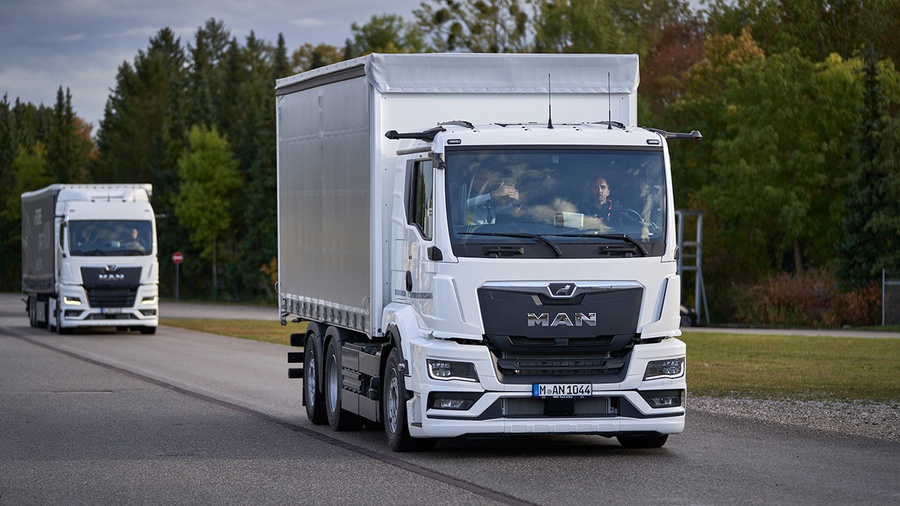The new MAN eTGX and MAN eTGS are characterized by high variability in battery configurations. With six battery packs, two of which are installed under the cab and up to four more on the side of the vehicle frame, both offer up to 480 kWh of usable battery capacity for daily ranges of up to 800 kilometers.
With their NMC cell chemistry and specially developed temperature management, the battery packs offer high energy density with a compact design, long service life and fast charging - even with low residual battery charge and low outside temperatures. This means that the optimum vehicle configuration in terms of range, payload and charging time can be selected for every application characteristic - from supermarket deliveries in the city center, through regional building materials supply, to long-distance transport in production logistics.
Operations in urban distribution transport, for example, generally require shorter daily ranges of up to 250 kilometers, and recharging takes place overnight after the tours in the logistics depot. The modular battery concept of the MAN eTGX and MAN eTGS offers the option of equipping the vehicle with only three, four or five battery packs instead of six, thus reducing the vehicle weight by up to 2.4 metric tons for more available payload and lower consumption for partial loads or empty runs.
In addition to the CCS standard with up to 375 kW, MAN will be offering the much more powerful megawatt charging standard (MCS) for fast intermediate charging during breaks in driving times right from the start of sales, which will initially enable 750 kW, and in a later expansion stage even more than one megawatt of charging power. Two CCS connections can be variably combined on the left and right sides behind the front wheel arch or on the right side of the frame at the rear. The MCS connection can also be ordered on the left or right instead of one of the front CCS connections.
. Free spaces on the left or right of the frame for high-performance pumps, equipment stowage areas, crane outriggers and similar body components with increased space requirements can be easily realized thanks to the flexible positioning of the batteries. The standard installation of two batteries under the cab, similar to the combustion engine in conventional vehicles, also ensures favorable weight distribution.
The positioning of the central drive unit also contributes to this. It sits centrally in the frame and comprises the synchronous electric motor, the inverter responsible for converting battery direct current into alternating current and for motor control, and the 2- or 4-speed transmission used depending on the power design, which drives the drive axles proven in the previous vehicle portfolio via a conventional cardan shaft.
Depending on the application configuration, the electric motor produces 333 hp (254 kW), 449 hp (330 kW) or 544 hp (400 kW) with corresponding maximum torque of 800, 1,150 or 1,250 Newton meters. In overrun and braking phases, the electric motor can be used by the driver as a generator, depending on usage requirements, and converts the vehicle's kinetic energy back into electrical energy. The batteries are recharged in the process. The maximum possible recuperation power corresponds to the drive power of the electric motor and is thus comparable to that of today's high-performance diesel engine endurance brakes. As with these, the automatic shifting of the transmission supports the best possible recuperation with increased engine speeds.
Drivers of the MAN eTGX and MAN eTGS are greeted by the familiar, driver-oriented cockpit layout and familiar operating logic, supplemented by typical e-vehicle operating features such as the settings for optimum use of regenerative braking, which also includes the retarder function. This can be operated via the familiar steering column lever to the right of the steering wheel or via the selectable one-pedal driving mode. In this mode, regenerative braking increases in intensity as the driver reduces pressure on the accelerator.
Source: MAN




